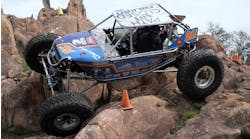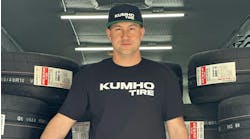Monster Energy NASCAR Cup Series, Race No. 31 – Alabama 500
NASCAR Camping World Truck Series, Race No. 19 – Fred’s 250
Path of Least Resistance: Most times putting camber in a race car’s set-up is designed to increase the footprint of the tires and increase grip through the corners. At Talladega Superspeedway, there is another benefit and it involves performance on the straightaways.
By increasing the camber — or the amount the top of tires are tilted — the car will run only on the inboard portion of the right-front tire (and outboard of the left-front) down the flatter straightaways, thus reducing the rolling resistance on the car and increasing the potential for speed. This comes most into play at Talladega on the right-front corner of the car, primarily because the camber rules are a little more liberal for the front tires and there has been known to be some right-side wear at this track over the past several seasons.
“NASCAR teams look for any and all advantages to gain speed, and influencing the rolling resistance through suspension settings, like camber, is one way they can do that at Talladega,” said Greg Stucker, Goodyear’s director of racing. “Since the track was repaved back in 2010, the amount of tire wear has increased over the years, leading to us bringing a more wear-resistant right-side tread compound starting in 2014. With the right-front normally seeing a significant amount of camber, teams will wear that inboard inch or two pretty heavily this weekend.”
Notes: Teams in both the NASCAR Cup and Camping World Truck Series will run the same tire set-up at Talladega this weekend. For Cup teams, this combination of left- and right-side tires dates back to October 2014. Truck teams began running this left-side tire code (D-4596) in 2014 and this right-side tire code (D-4630) in 2015.
As on all NASCAR ovals greater than one mile in length, teams are required to run inner liners in all four tire positions at Talladega. The air pressure in those inner liners should be 12-25 psi greater than that of the outer tire.


